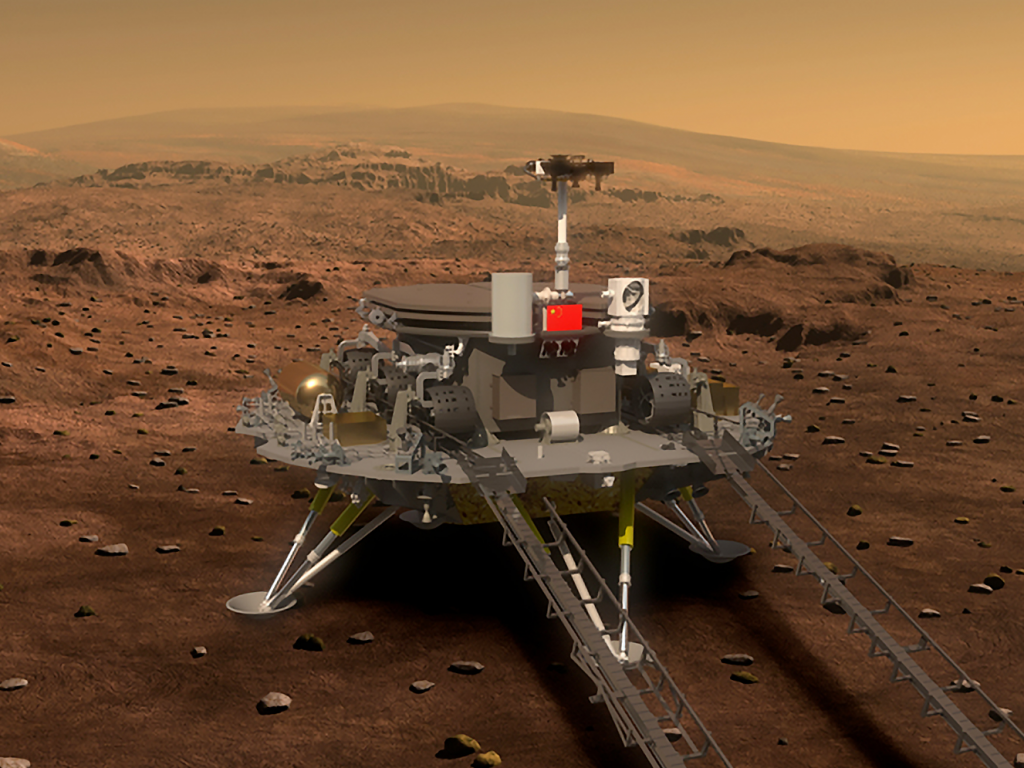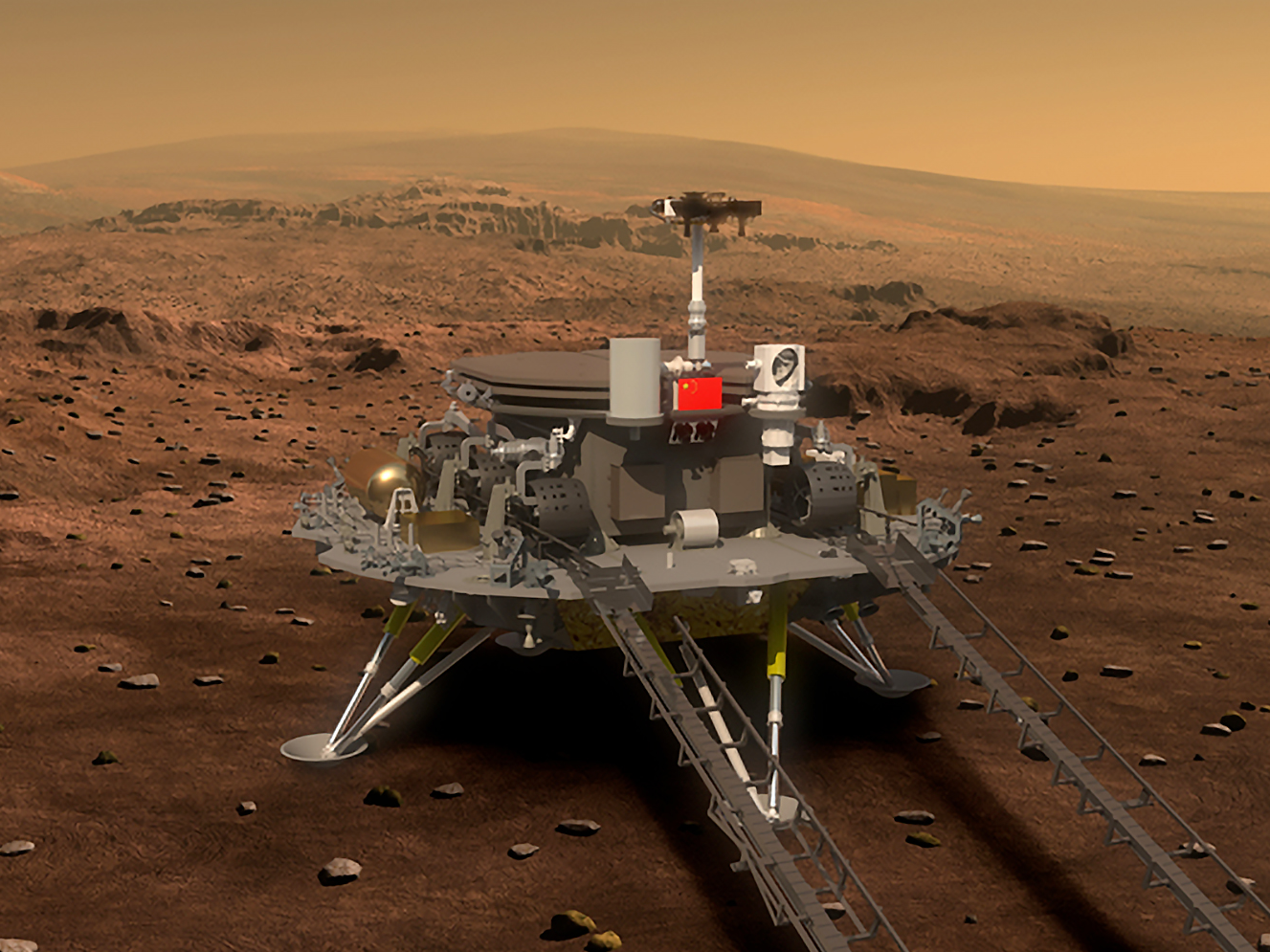
Chinese State Administration of Science/Xinhua
- China's Zhurong rover, which landed on Mars on Saturday, sent back its first images of the planet.
- The rover's cameras snapped photos of the Martian landscape from onboard the Tianwen-1 lander.
- China is the third nation ever to land on Mars. Its rover aims to study water ice under the surface.
- See more stories on Insider's business page.
China made history on Saturday when it successfully landed a spacecraft on Mars, making it just the third nation ever to do so.
On Wednesday, the Chinese National Space Administration (CNSA) received its first postcard from the red planet.
The CNSA released the images, one color and one black-and-white, on Wednesday.
The color image below, taken by the navigation camera on China's Mars rover, shows its solar panels unfolded, soaking in the sun's ray for energy. The rover is called Zhurong, after a god of fire in Chinese mythology.
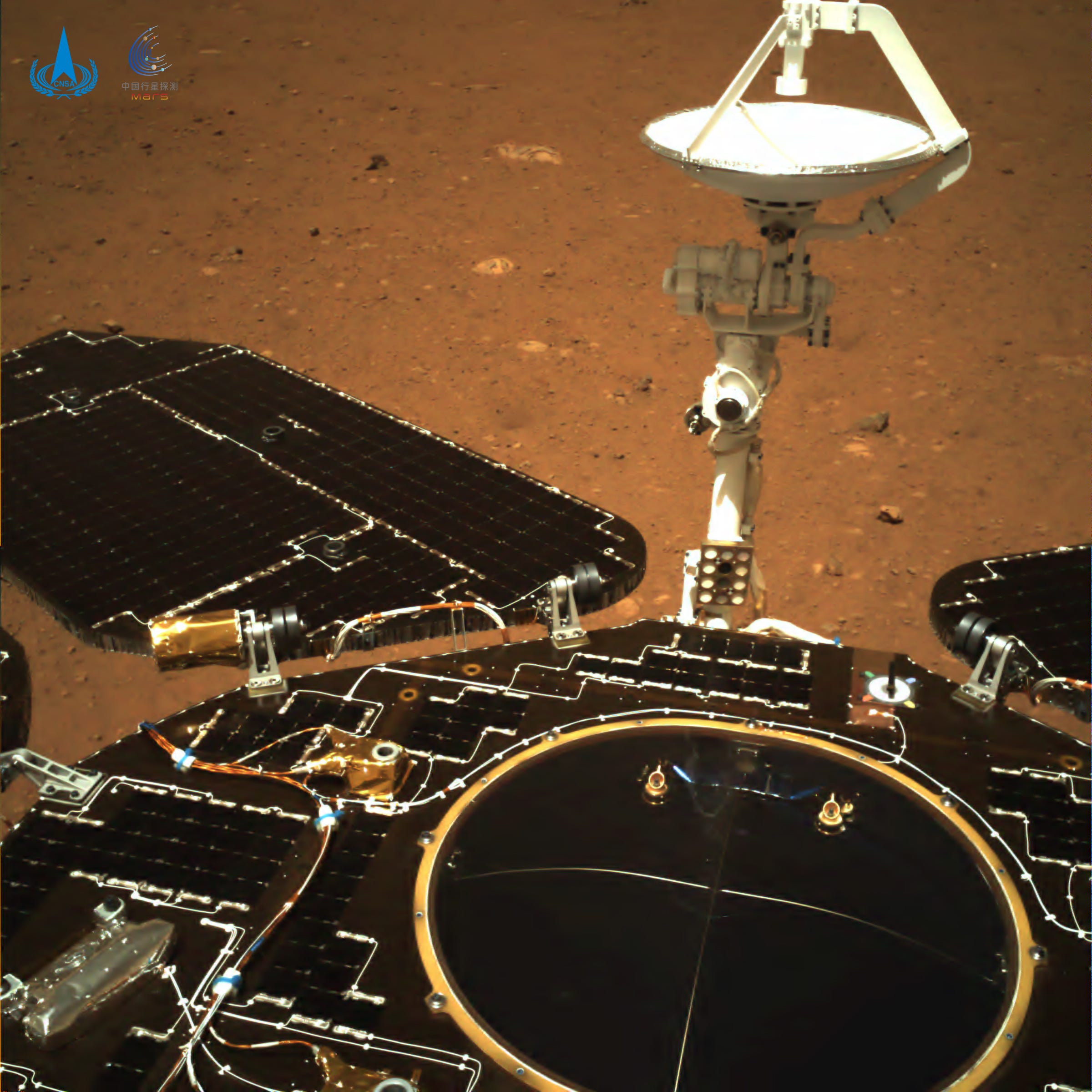
China National Space Administration
China's Mars mission is called Tianwen-1, meaning "questions to heaven." It's the first Mars mission ever to send a spacecraft into the planet's orbit, drop a landing platform onto the Martian surface, and deploy a rover all in one expedition.
The Tianwen-1 lander carried Zhurong inside of it down to Mars' Utopia Planitia - a giant plain in the planet's northern hemisphere. The rover is still in the lander, but it's expected to drive down a built-in ramp to get off the lander and onto the surface of Mars either Friday or Saturday, Space.com reported.
Zhurong's obstacle-avoidance camera took the black-and-white image below, which depicts the lander ramp.
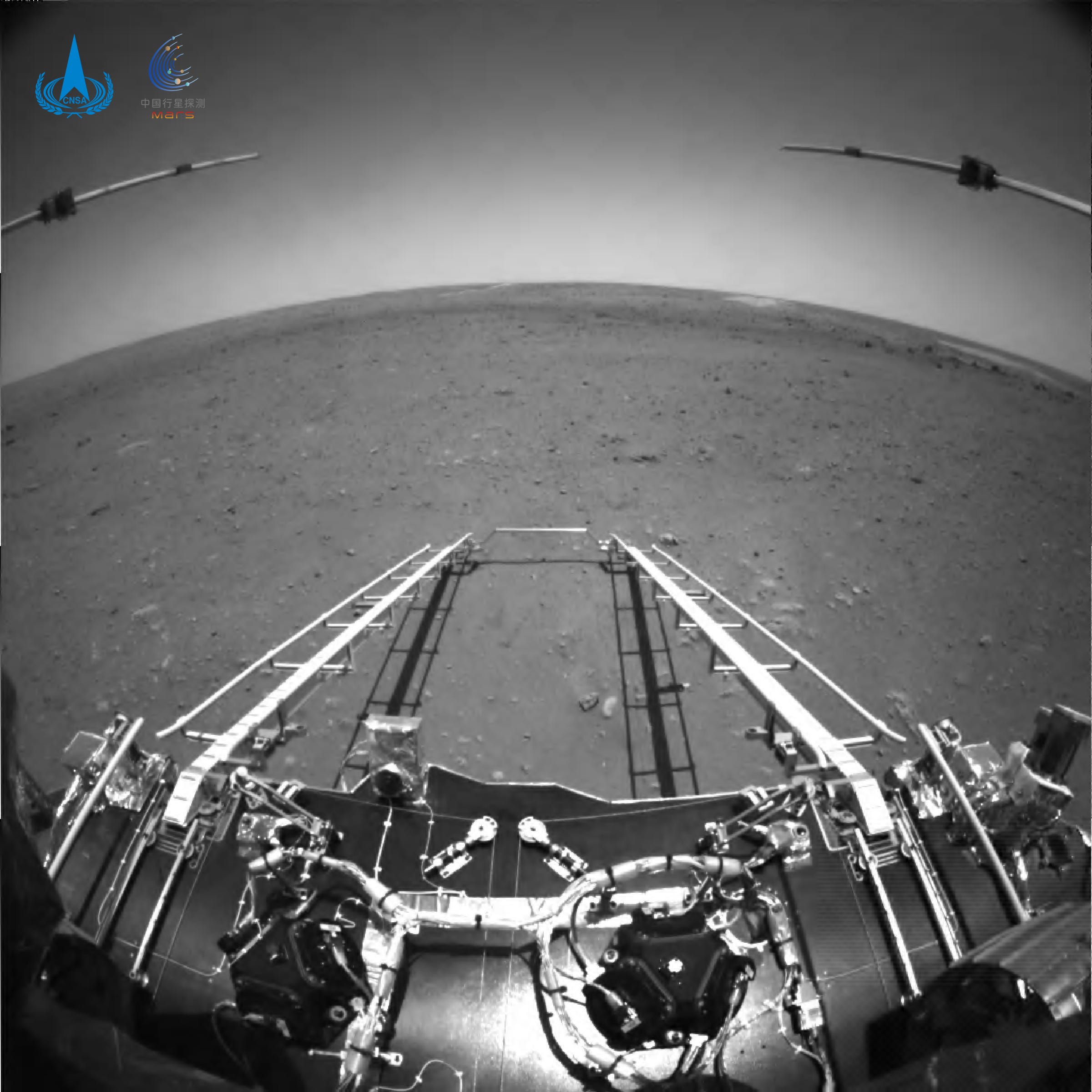
China National Space Administration
Once the rover drives down that ramp, it's programmed to explore the plain and search for underground water ice.
Utopia Planitia is a vast field of ancient volcanic rock that may have extensive reserves of water ice beneath its surface. If space agencies like NASA and CNSA send humans to Mars one day, water would be a crucial resource because it can both sustain astronauts and get broken down into hydrogen and oxygen for rocket fuel. It's unlikely Mars-bound spaceships could carry enough water, oxygen, and hydrogen for the entire journey there and back.
At 530 pounds, Zhurong is about the size of the Spirit and Opportunity rovers NASA landed on Mars in 2004.
Once Zhurong is on the ground, it has about 90 days to study Mars.
That's its official mission timeline, but Spirit and Opportunity had the same three-month window and ended up exploring Mars for six and 14 years, respectively.
Zhurong is 1,000 miles away from NASA's Perseverance rover
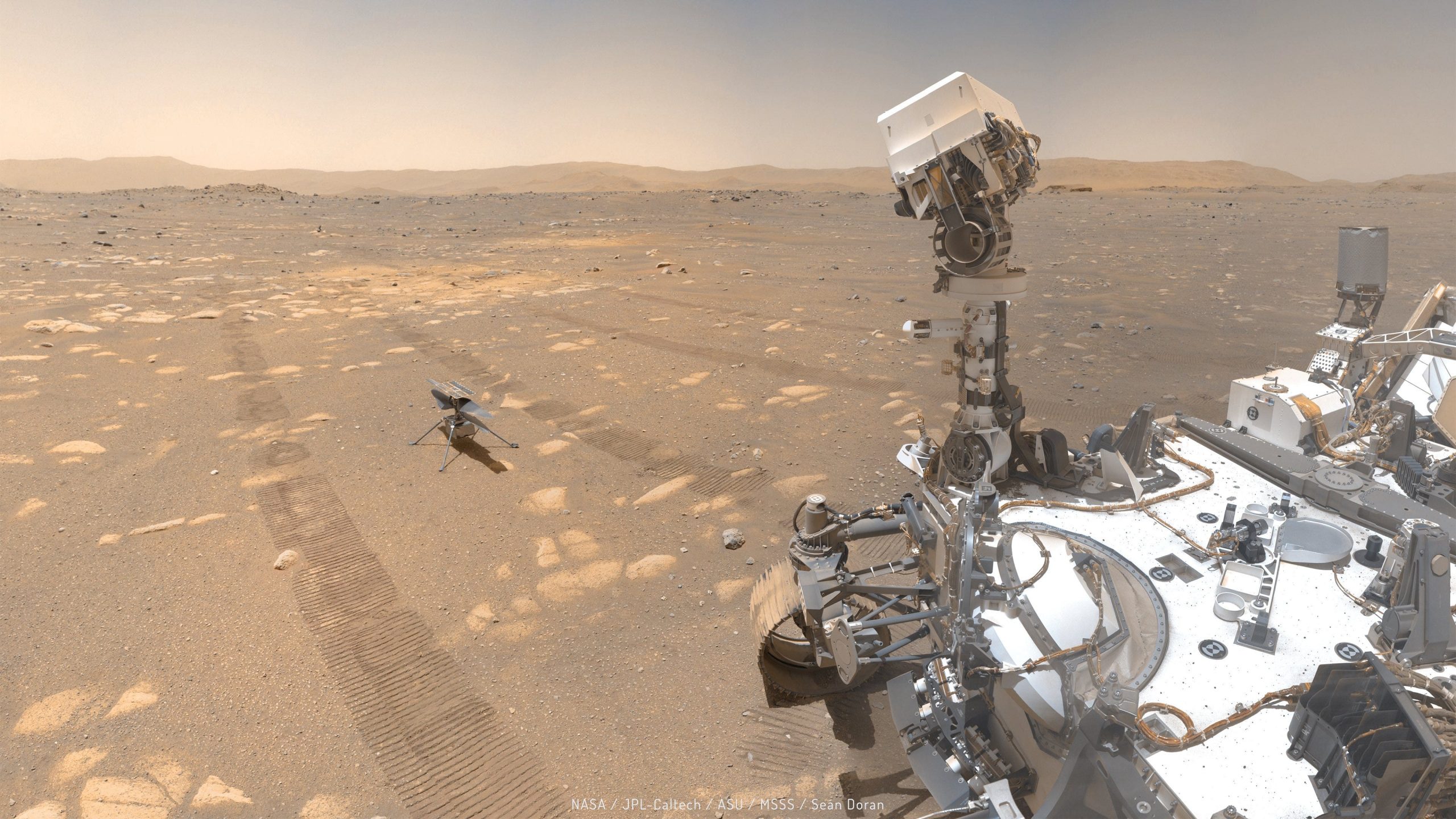
NASA/JPL-Caltech/MSSS/Seán Doran
Now that the Tianwen-1 lander and Zhurong rover have reached Mars, NASA's Perseverance rover and Ingenuity helicopter are no longer the red planet's newest arrivals.
Perseverance touched down on Mars three months ago carrying Ingenuity, in part of the planet called the Jezero Crater.
Perseverance is set to explore Mars and search of signs of ancient microbial life. Ingenuity has thus far flown over the Martian landscape five times.
It's unlikely China and the US's rovers will ever cross paths. While both Utopia Planitia and the Jezero Crater are in Mars' northern hemisphere, the distance between the two landing sites is about 1,000 miles.
